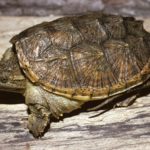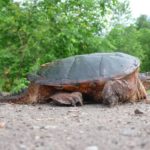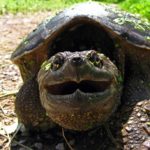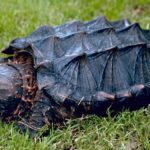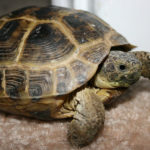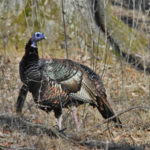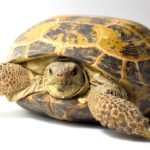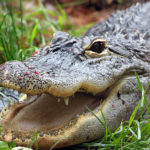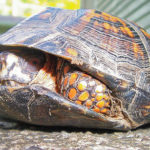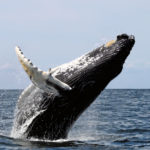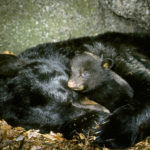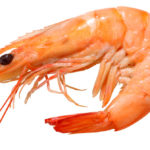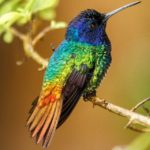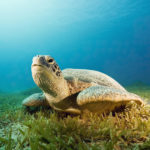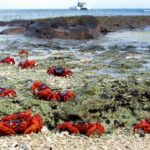Snapping turtles
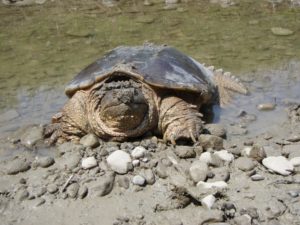 In the wild there are individuals with a mass of up to 20 kg. Some well-fed captives weigh over 34 kg. A resident of the North and North of South America from Southeast Canada to Colombia and Ecuador. Freshwater species. He likes soft silty bottom and thickets of plants. Can also occur in brackish waters. Snapping turtle is very undemanding to temperature, often remains active even in winter. He leads a water lifestyle, likes to rest on warm shallows, often hiding in the ooze, from which only the eyes and nostrils stick out. Winter spend in hibernation, buried in the silt, hiding among plant residues or inside muskrat houses. They wake up in April.
In the wild there are individuals with a mass of up to 20 kg. Some well-fed captives weigh over 34 kg. A resident of the North and North of South America from Southeast Canada to Colombia and Ecuador. Freshwater species. He likes soft silty bottom and thickets of plants. Can also occur in brackish waters. Snapping turtle is very undemanding to temperature, often remains active even in winter. He leads a water lifestyle, likes to rest on warm shallows, often hiding in the ooze, from which only the eyes and nostrils stick out. Winter spend in hibernation, buried in the silt, hiding among plant residues or inside muskrat houses. They wake up in April.
The main food is invertebrates, carrion, water plants, fish, birds and small mammals. Snapping turtles are excellent swimmers; Some may swim from their place of residence for 2-3 km, returning to their home only in a few hours. These turtles are very aggressive and can seriously bite if they are caught or teased. This feature should be taken into account when caring for animals. Take them in hand is necessary for the back of the carapace and keep very tight, given the mass and strength of these turtles.
Reproduction lasts from April to November; The peak of the egg laying season is in June. In the nest, which is a globular fossa 10-18 cm in depth, up to 83 (usually 25-50) spherical eggs with a diameter of 3.5 cm can be deposited. Each deferred egg is instilled by alternating movement of the hind legs. Incubation, depending on the weather, lasts 9-18 weeks.
In places with a temperate climate, hatched turtles often remain in the nests under the ground for the winter. Feeding young turtles are small invertebrates and a significant amount of green vegetation. As the size of their production increases, more and more. Females can keep sperm in their genital tract for several years. Often females travel overland to the breeding site, which is some distance from their habitat.
